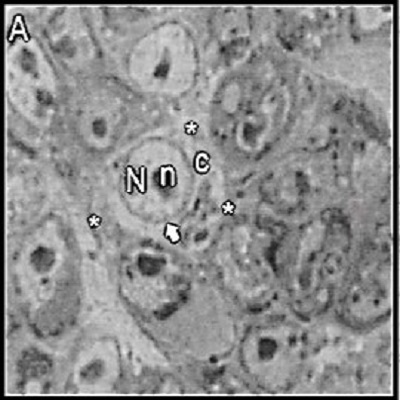Ochratoxin A cytotoxicity on HepG2 cell propagation
DOI:
https://doi.org/10.24054/bistua.v21i2.2530Keywords:
Ochratoxin A, proliferation, cytotoxicityAbstract
Ochratoxin A (OTA) is a secondary metabolite produced by fungi of the Aspergillus and Penicillum genera, with a toxic effect on various living beings, it is found in a wide variety of foods and animal feed, for this reason lies the importance of estimating the toxic effects of OTA on the HepG2 cell line by inhibiting cell proliferation and determining morphological changes in cells and their correlation with apoptosis. The HepG2 cell line was exposed for 48 and 72 hours at concentrations of 1.0; 2.5; 10 and 15 µM lyophilized OTA; Next, the antiproliferative activity of the mycotoxin was calculated using the MTT colorimetric method (3-(4,5-dimethyl-2-thiazolyl)-2,5-diphenyltetrazolium bromide). Subsequently, in HepG2 cells treated with 10µM OTA for 48 hours, the morphological changes related to apoptotic cell death were analyzed by transmission electron microscopy. The propagation of HepG2 cells is affected from the concentration of 2.5 µM of OTA, in contrast to the control. Then, the measurement of the mean inhibitory concentration (IC50) of OTA on HepG2 cells was carried out, this was 9.19µM SD±0.68 and 9.98µM SD±0.4, at 48 and 72 hours, respectively. Morphological alterations related to cell death by apoptosis in HepG2 cells were evidenced, such as fragmentation of the nucleus (karyorrhexis), cell fragmentation and formation of apoptotic bodies.
Downloads
References
A. Ravelo, C. Rubio Armendáriz, and A. J. Gutiérrez Fernández, "La ocratoxina A en alimentos de consumo humano: revisión," Nutrición Hospitalaria, vol. 26, no. 6, pp. 1215-1226, 2011. [Online]. Available: https://doi.org/10.3305/nh.2011.26.6.5381
Y. Tao, S. Xie, F. Xu, A. Liu, Y. Wang, D. Chen, Y. Pan, L. Huang, D. Peng, X. Wang, and Z. Yuan, "Ochratoxin A: Toxicity, oxidative stress and metabolism," Food and Chemical Toxicology, vol. 112, pp. 320-331, 2018. [Online]. Available: https://doi.org/10.1016/j.fct.2018.01.002
W. Chen, C. Li, B. Zhang, Z. Zhou, Y. Shen, and X. Liao, "Advances in Biodetoxification of Ochratoxin A-A Review of the Past Five Decades," Frontiers in Microbiology, vol. 9, p. 1386, 2018. [Online]. Available: https://doi.org/10.3389/fmicb.2018.01386
H. A. Serrano and N. Cardona, "Micotoxicosis y micotoxinas: generalidades y aspectos básicos," Revista CES Medicina, vol. 29, no. 1, pp. 143-152, 2015.
X. Zhang, C. Boesch, Y. Lou, S. Wolfram, P. Huebbe, and G. Rimbach, "Ochratoxin A induces apoptosis in neuronal cells," Genes & Nutrition, vol. 4, no. 1, pp. 41-48, 2009. [Online]. Available: https://doi.org/10.1007/s12263-008-0109-y

Additional Files
Published
Versions
- 2023-12-16 (4)
- 2023-12-12 (3)
- 2023-12-12 (2)
- 2023-11-20 (1)
Issue
Section
License
Copyright (c) 2023 © Autores; Licencia Universidad de Pamplona

This work is licensed under a Creative Commons Attribution-NonCommercial-NoDerivatives 4.0 International License.
© Autores; Licencia Universidad de Pamplona





